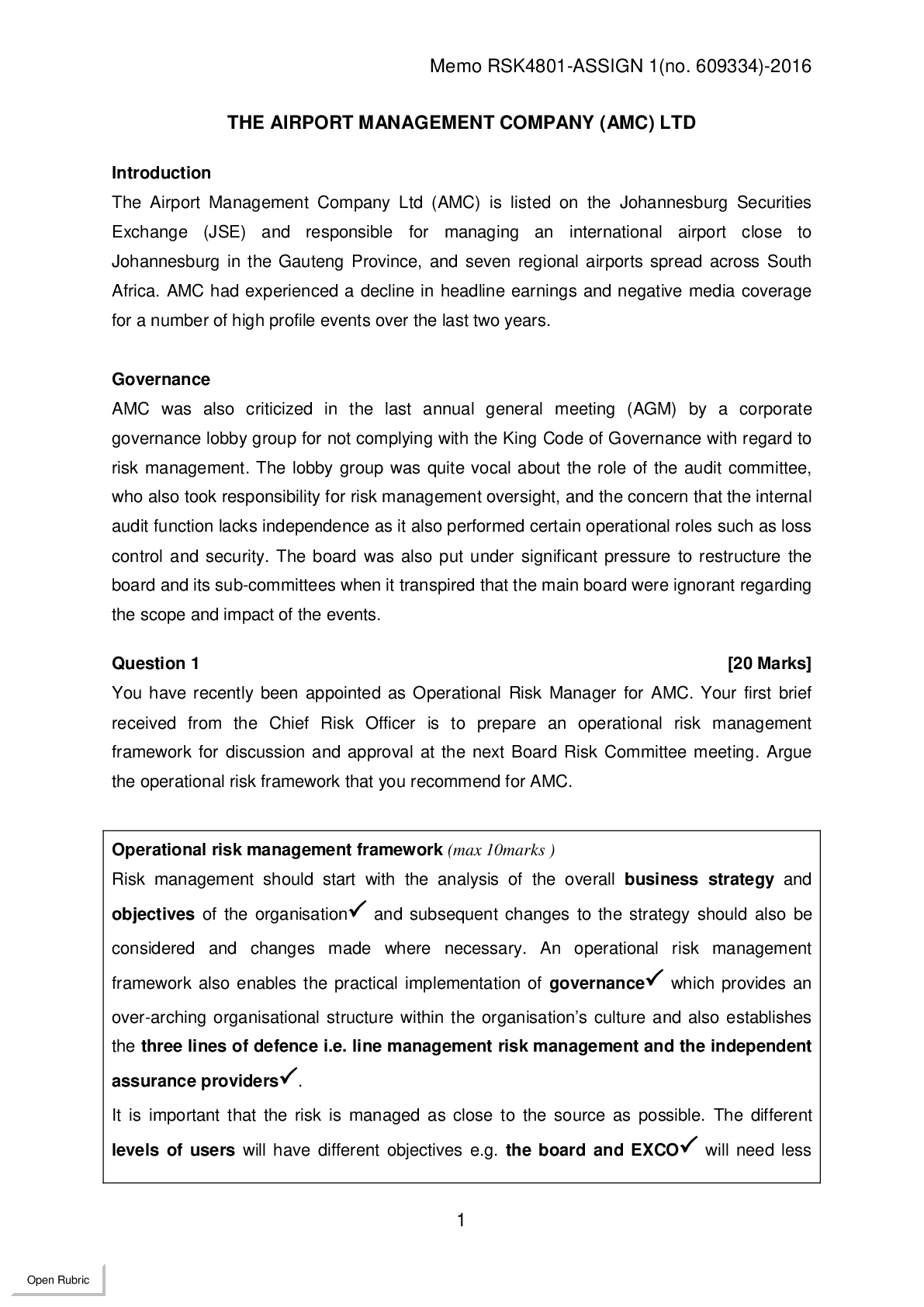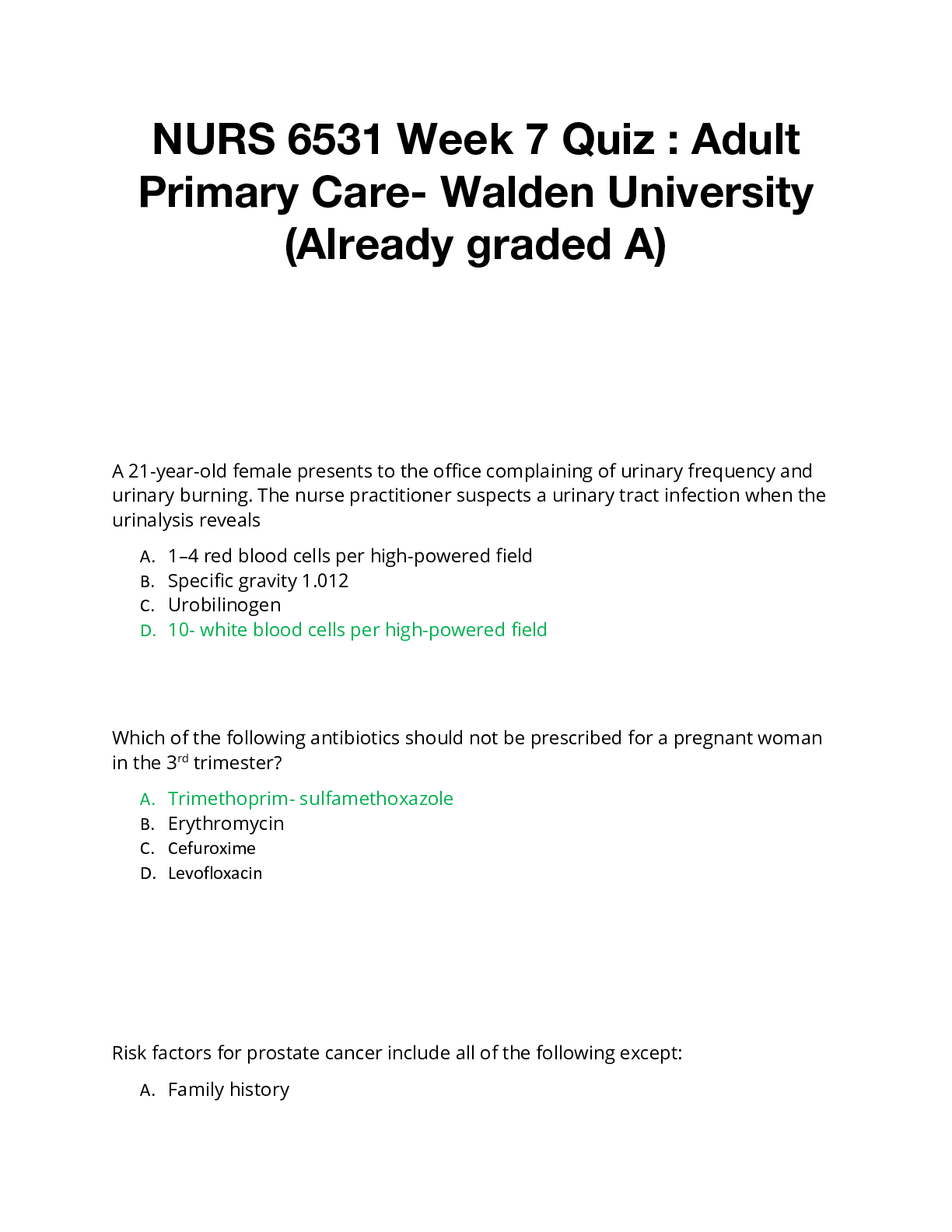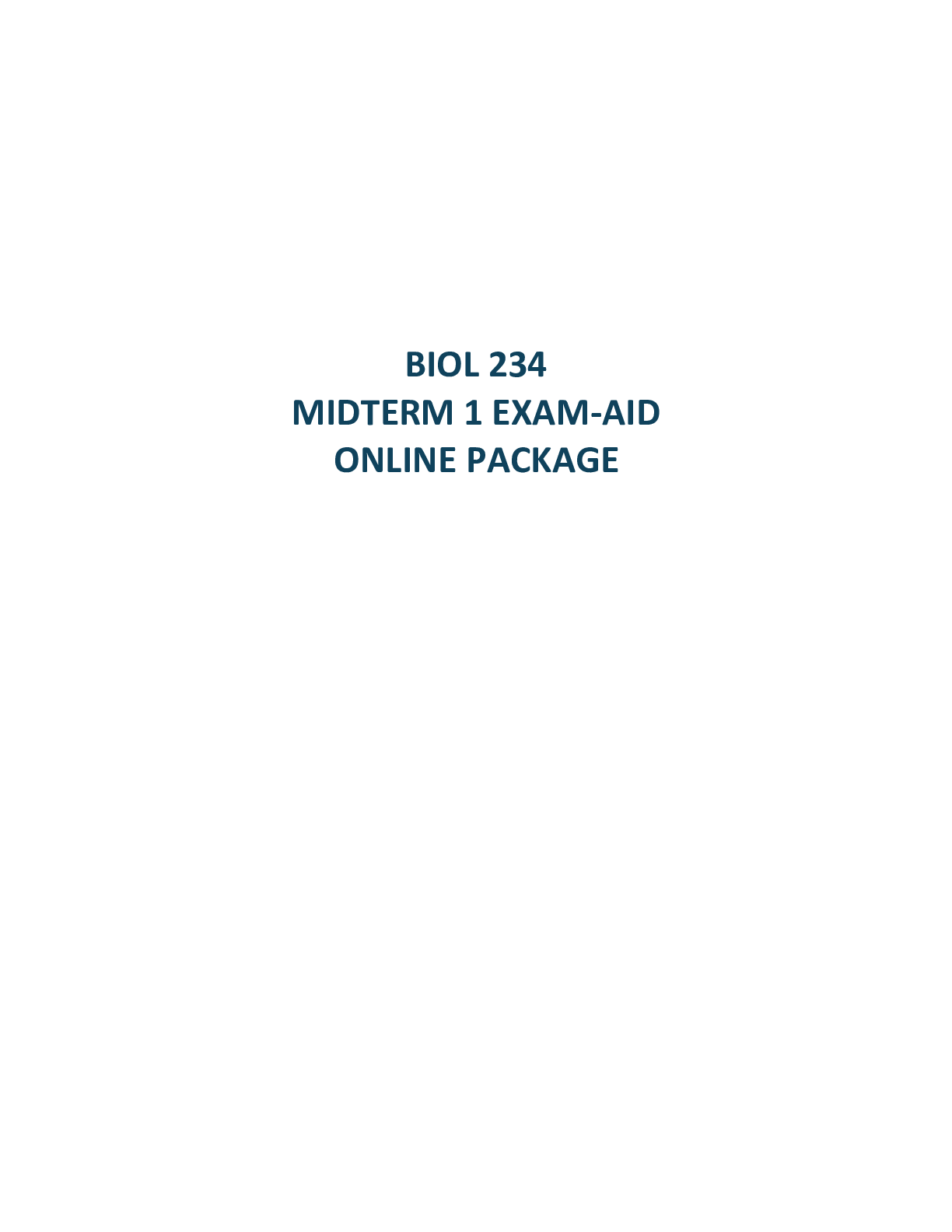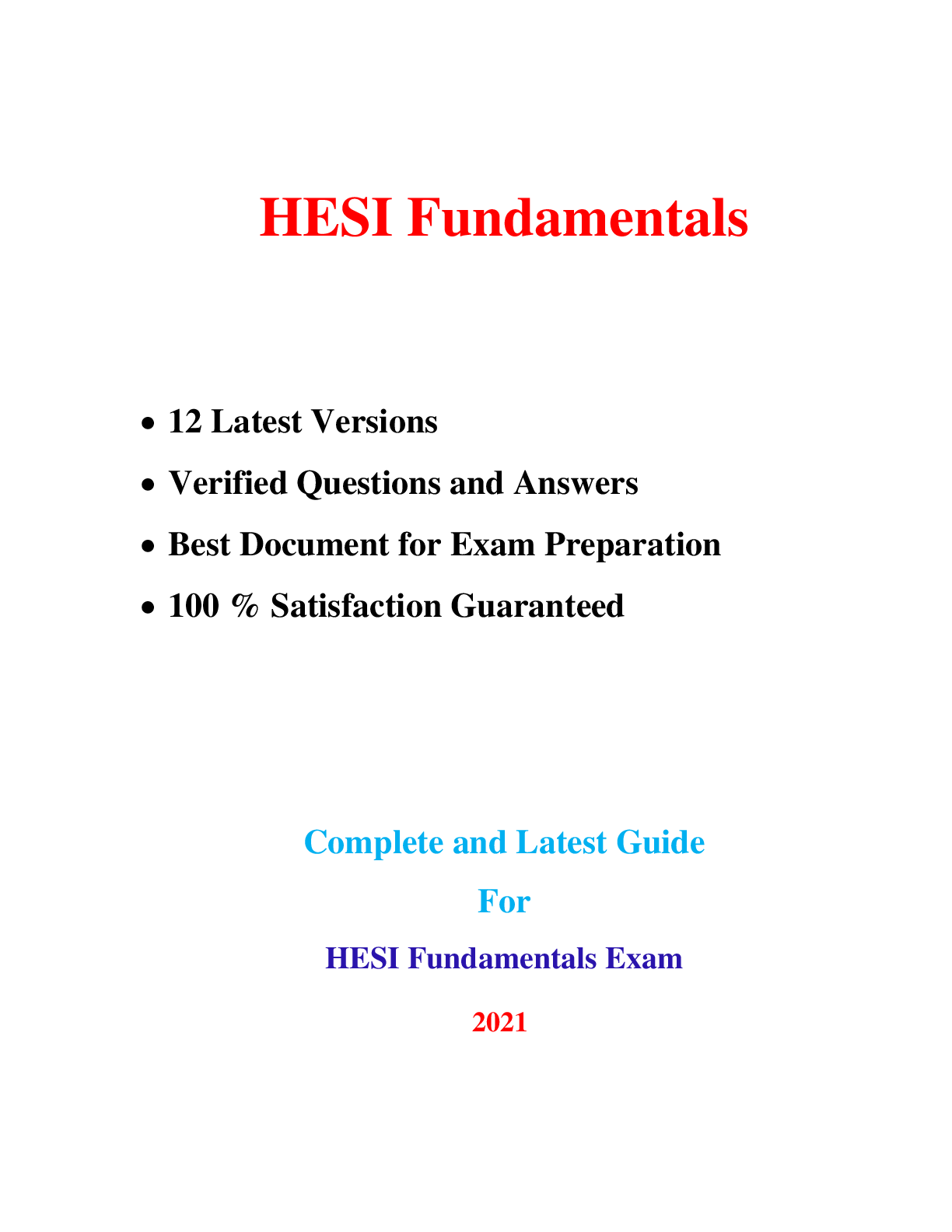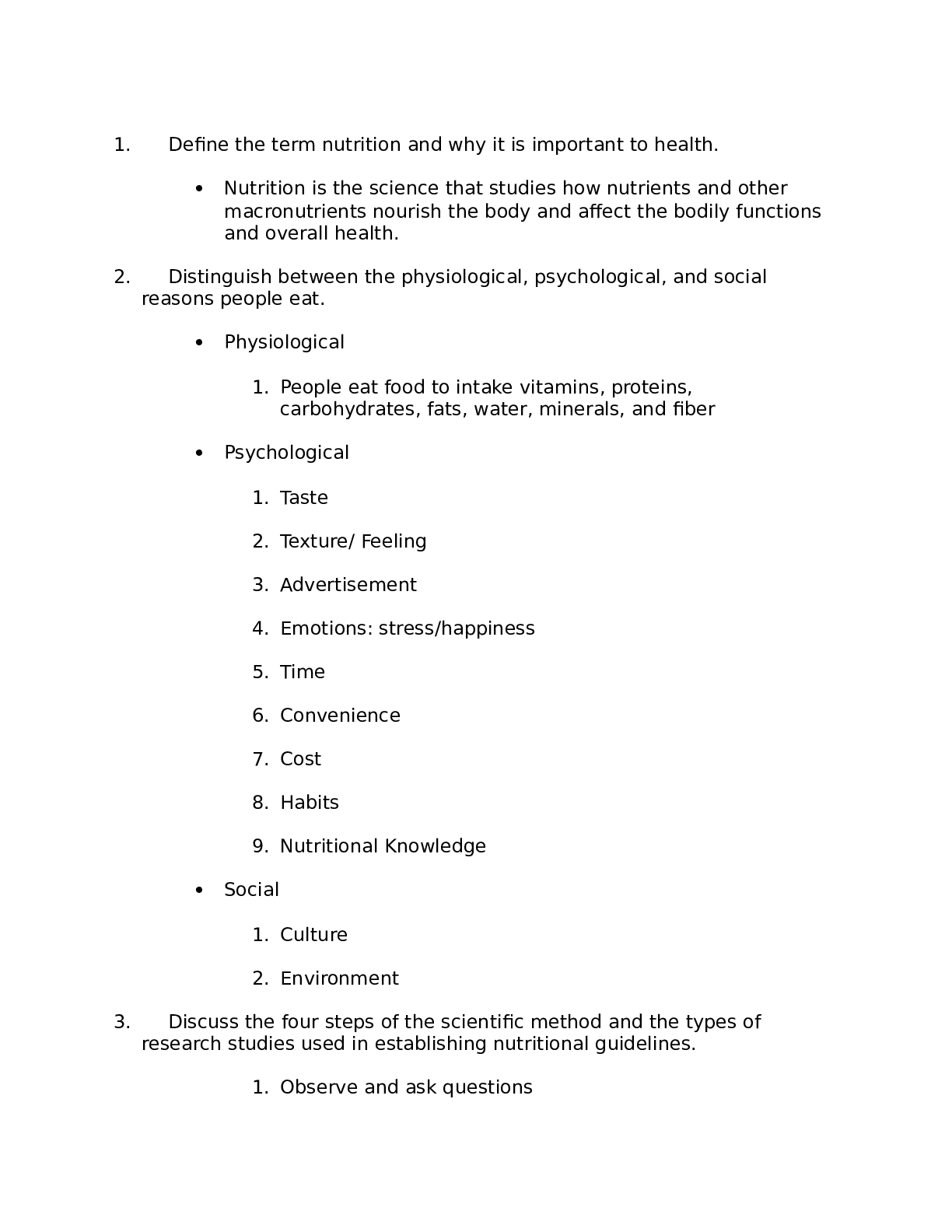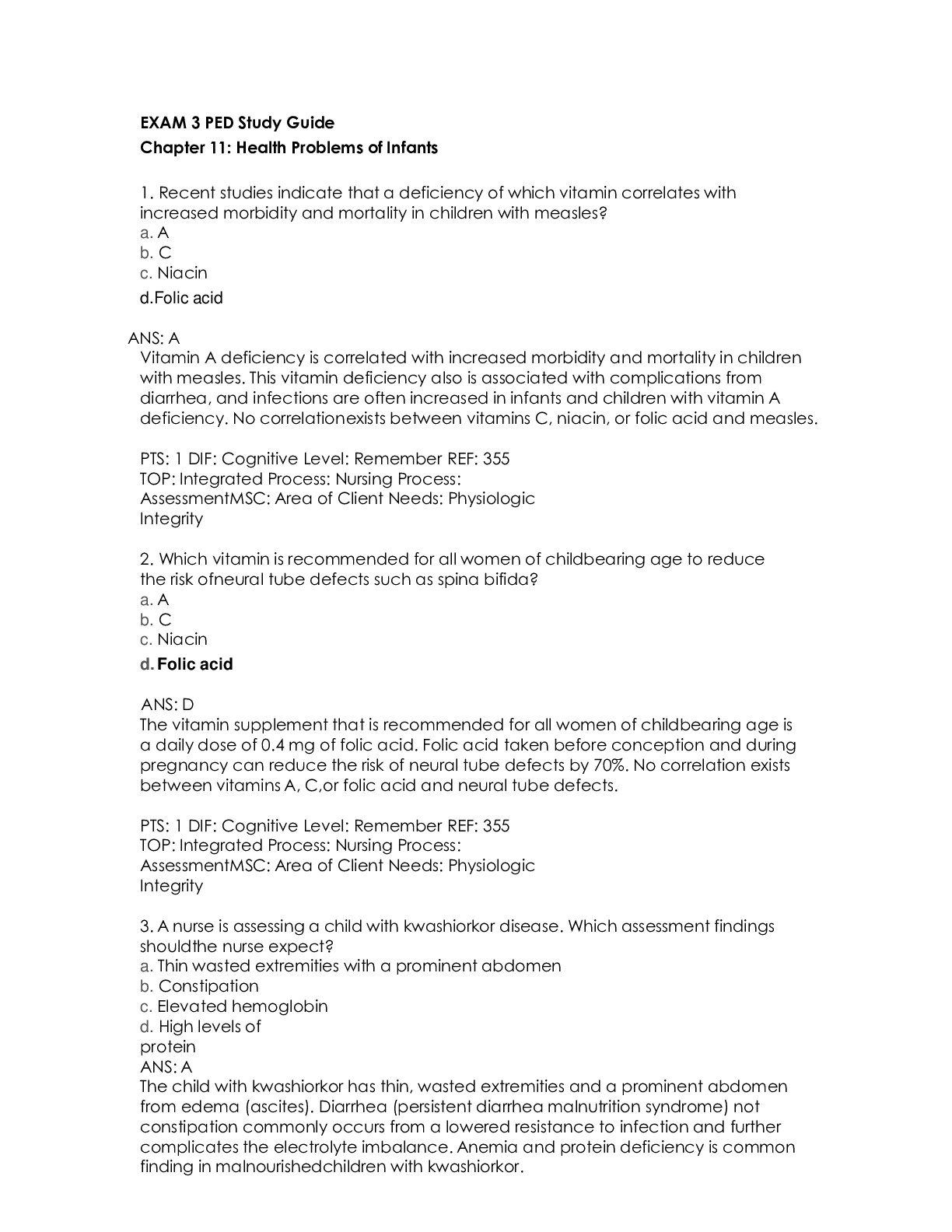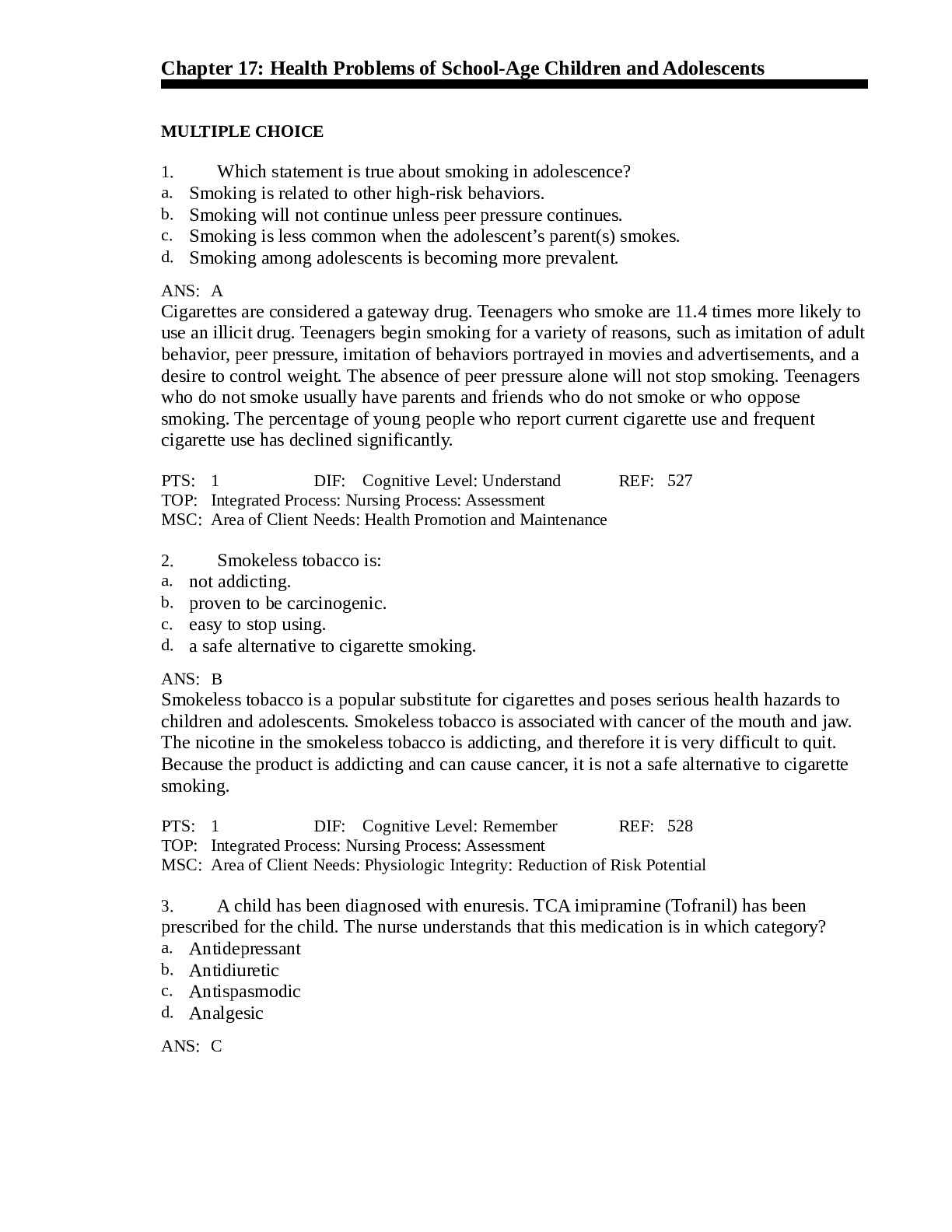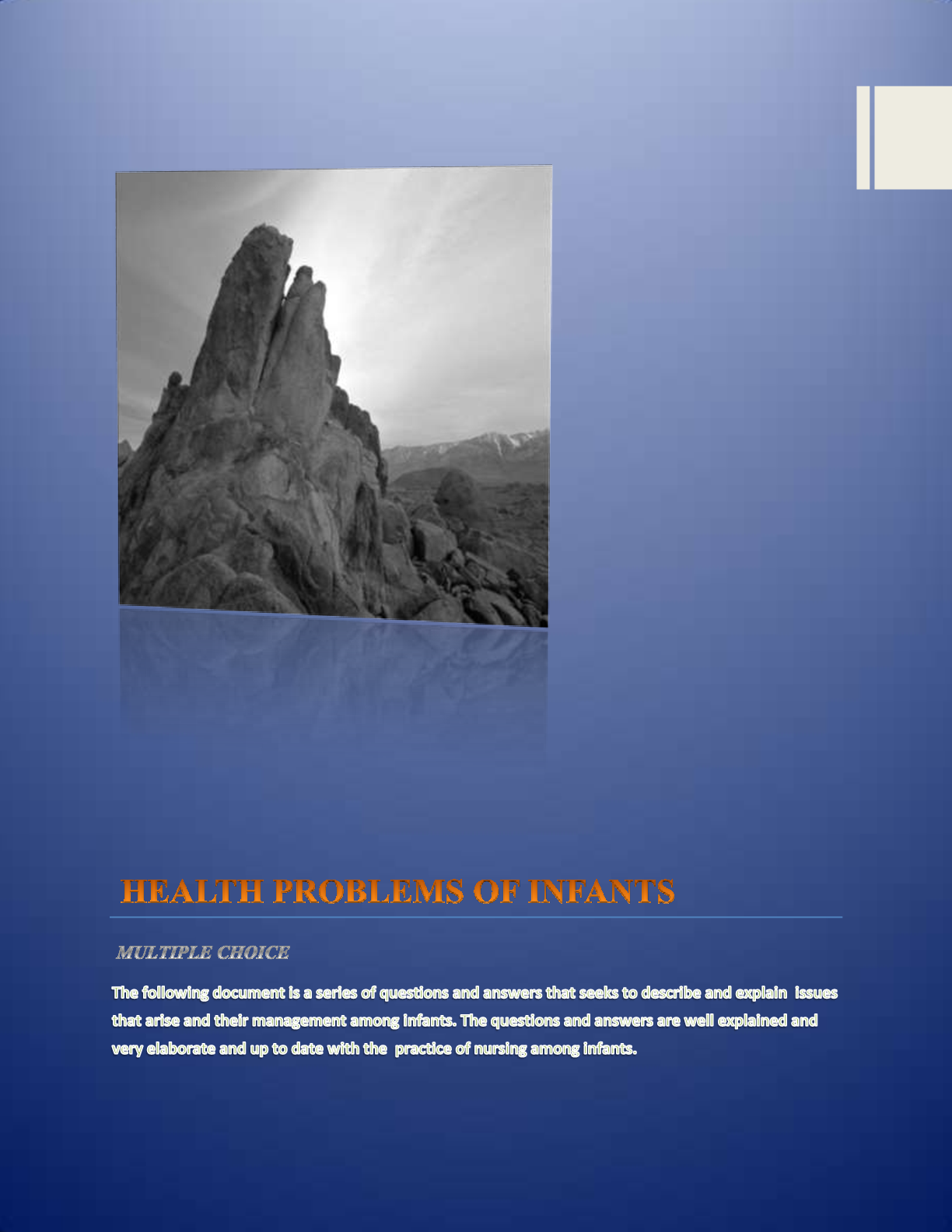*NURSING > QUESTIONS & ANSWERS > Chapter 16: Health Problems of School-Age Children and Adolescents (All)
Chapter 16: Health Problems of School-Age Children and Adolescents
Document Content and Description Below
1. Which statement is true about smoking in adolescence? a. Smoking is related to other high-risk behaviors. b. Smoking will not continue unless peer pressure continues. c. Smoking is less common w... hen the adolescent’s parent(s) smokes. d. Smoking among adolescents is becoming more prevalent. 2. What is smokeless tobacco? a. Not addicting b. Proven to be carcinogenic c. Easy to stop using d. A safe alternative to cigarette smoking 3. A child has been diagnosed with enuresis. TCA imipramine (Tofranil) has been prescribed for the child. The nurse understands that this medication is in which category? a. Antidepressant b. Antidiuretic c. Antispasmodic d. Analgesic 4. A 12-year-old male has short stature because of a constitutional growth delay. What should the nurse be the most concerned about? a. Proper administration of thyroid hormone b. Proper administration of human growth hormones c. Child’s self-esteem and sense of competence d. Helping child understand that his height is most likely caused by chronic illness and is not his fault 5. An adolescent asks the nurse what causes primary dysmenorrhea. The nurse’s response should be based on which statement? a. It is an inherited problem. b. Excessive estrogen production causes uterine pain. c. There is no physiologic cause; it is a psychological reaction. d. There is a relation between prostaglandins and uterine contractility. 6. An adolescent girl asks the school nurse for advice because she has dysmenorrhea. She says that a friend recommended she try an over-the-counter nonsteroidal anti-inflammatory drug (NSAID). The nurse’s response should be based on which statement? a. Aspirin is the drug of choice for the treatment of dysmenorrhea. b. Over-the-counter NSAIDs are rarely strong enough to provide adequate pain relief. c. NSAIDs are effective because of their analgesic effect. d. NSAIDs are effective because they inhibit prostaglandins, leading to reduction in uterine activity. 7. A 14-year-old boy and his parents are concerned about bilateral breast enlargement. The nurse’s discussion of this should be based on which statement? a. This is usually benign and temporary. b. This is usually caused by Klinefelter syndrome. c. Administration of estrogen effectively reduces gynecomastia. d. Administration of testosterone effectively reduces gynecomastia. 8. An adolescent tells the school nurse that she is pregnant. Her last menstrual period was 4 months ago. She has not received any medical care. She smokes but denies any other substance use. What is the priority nursing action? a. Notify her parents b. Refer for prenatal care c. Explain the importance of not smoking d. Discuss dietary needs for adequate fetal growth [Show More]
Last updated: 2 years ago
Preview 1 out of 15 pages

Buy this document to get the full access instantly
Instant Download Access after purchase
Buy NowInstant download
We Accept:

Reviews( 0 )
$8.00
Can't find what you want? Try our AI powered Search
Document information
Connected school, study & course
About the document
Uploaded On
Jul 26, 2022
Number of pages
15
Written in
Additional information
This document has been written for:
Uploaded
Jul 26, 2022
Downloads
0
Views
81

